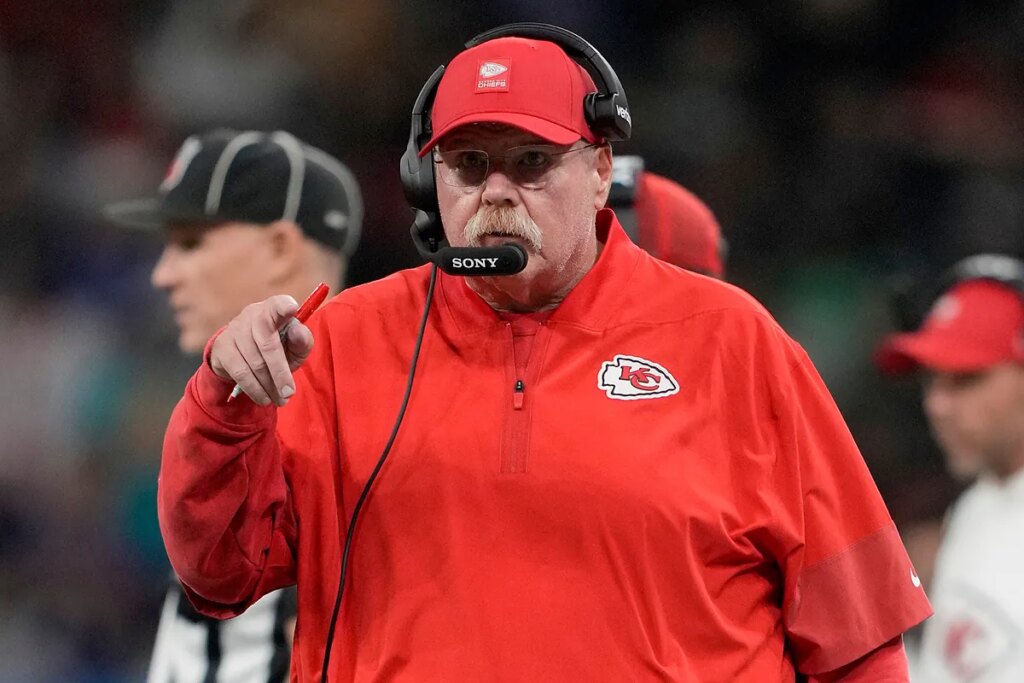The Kansas City Chiefs and Philadelphia Eagles are preparing for a rematch that carries significance far beyond the calendar. Seven months after Philadelphia’s decisive victory in Super Bowl LIX, the two teams meet again, this time at Arrowhead Stadium.
The matchup does not merely represent a Week 2 fixture; it is an opportunity to reassert control in one of the NFL’s most evenly matched modern rivalries.
Historically, the series between these teams has been defined by balance. Both franchises have six wins against the other, and their Super Bowl encounters are split: Kansas City prevailed 38-35 in 2023, while Philadelphia responded with a 40-22 win this past February. The symmetry underscores the stakes: whichever side secures a victory in Week 2 will tilt the scales in its favor.
Kansas City enters the game with questions to answer. Patrick Mahomes has produced strong but not dominant numbers against Philadelphia-455 yards and seven touchdowns in two appearances-but the Eagles’ defense has limited his efficiency with consistent pressure, including six sacks in their last championship meeting.
Tight end Travis Kelce has been similarly contained. Although his 29 receptions for 290 yards across five contests are valuable, they have not reflected the kind of game-altering performances often associated with him.
Key challenges for Kansas City
The Chiefs’ foremost concern is defensive pressure. In the opener against the Los Angeles Chargers, Kansas City struggled to generate consistent disruption despite recording three sacks. Justin Herbert operated comfortably from the pocket, completing 25 of 34 passes for 318 yards and three touchdowns.
The inability to collapse the pocket against an offensive line missing key starters highlights a vulnerability that could prove costly against the Eagles’ elite front.
Philadelphia’s offensive identity, led by quarterback Jalen Hurts, presents a multidimensional threat. Hurts combines efficient passing with rushing ability, accounting for 62 yards on the ground in Week 1. Neutralizing his impact requires interior dominance from Chris Jones and disciplined edge containment, both of which were inconsistent in the season opener.
The second challenge is tactical. Defensive coordinator Steve Spagnuolo may need to deploy additional blitz packages to pressure Hurts. While blitzing can force hurried decisions, it inevitably exposes the secondary to man-to-man coverage.
Against receivers of A.J. Brown’s and DeVonta Smith’s caliber, single coverage poses significant risks. Kansas City will likely need to rely on Trent McDuffie to manage Smith, while committing safety help to limit Brown.
The final concern lies on the offensive side. Philadelphia’s secondary has been weakened by offseason departures and early injuries, leaving vulnerabilities at outside cornerback. Exploiting that weakness, however, requires dependable receivers.
With Rashee Rice unavailable until midseason and rookie Xavier Worthy sidelined, the Chiefs lack consistent outside threats. Without reliable perimeter targets, Mahomes may find it difficult to fully capitalize on Philadelphia’s defensive gaps.
For head coach Andy Reid, success will depend on resolving these three issues: revitalizing the pass rush, balancing blitz aggression with coverage discipline, and identifying a trustworthy receiving option on the boundary. Arrowhead Stadium provides home-field advantage, but execution across these areas will ultimately determine the outcome.
This contest represents more than an early-season benchmark. For Kansas City, it is an opportunity to reestablish momentum and respond to February’s defeat. For Philadelphia, it is a chance to confirm superiority and extend their recent dominance. Either way, the Week 2 clash promises to add another defining chapter to a rivalry now marked by balance, intensity, and high stakes.
Read the full article here

